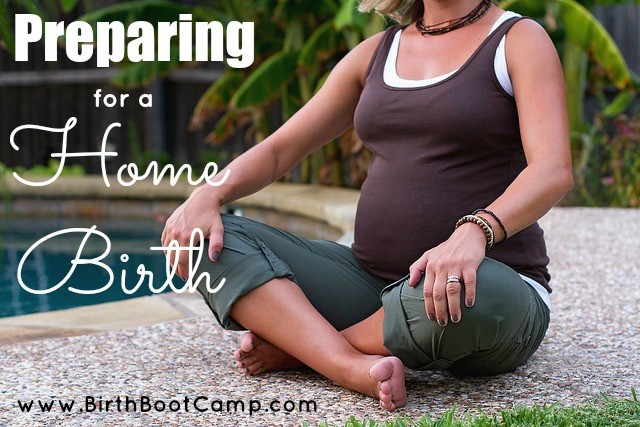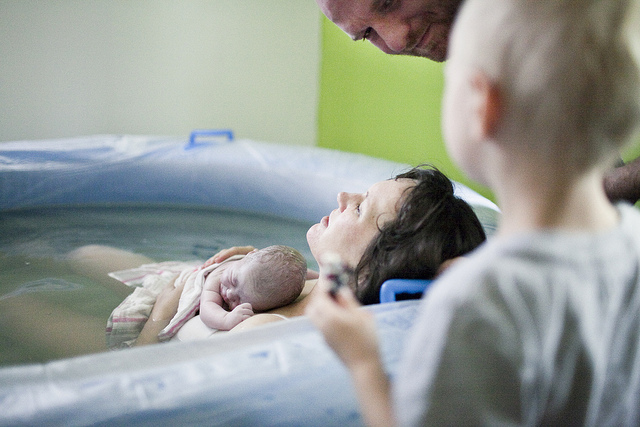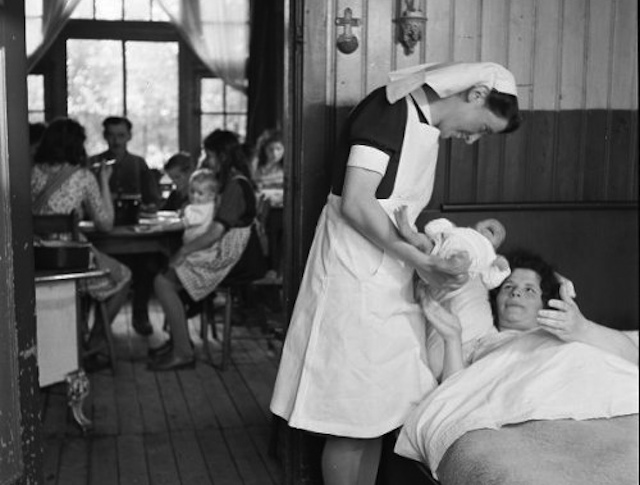 We live in the era of informatics. Knowledge is easily accessible to us: we can learn virtually anything by just googling it. But paradoxically too much information many times leads to misinformation.
We live in the era of informatics. Knowledge is easily accessible to us: we can learn virtually anything by just googling it. But paradoxically too much information many times leads to misinformation.
When it comes to fertility issues, there is a lot of disinformation going around. Therefore, it is no surprising what a recent survey showed: knowledge regarding ovulation, fertility, and conception issues is limited among women, and many tend to believe certain myths and misconceptions.
These are 14 fertility myths most people believe, but that science has debunked:
MYTH #1. Maternity wise, 40s is the new 30s
 Our life expectancy is longer, and we tend to postpone maternity due to career or study purposes. From that aspect, the 40s can be easily regarded as the new 30s. Unfortunately, this is not true for our ovaries: by the age of 30, a healthy woman has about a 20% chance of conceiving each month, by the time she reaches 40 her odds drop to about 5%.
Our life expectancy is longer, and we tend to postpone maternity due to career or study purposes. From that aspect, the 40s can be easily regarded as the new 30s. Unfortunately, this is not true for our ovaries: by the age of 30, a healthy woman has about a 20% chance of conceiving each month, by the time she reaches 40 her odds drop to about 5%.
This is one of the most commonly believed misconceptions: unaware of the age-related fertility decline, many women start seeking help to conceive in their 40s, when they may have already missed the opportunity to become parents.
You should be aware that there is a biological clock, and it’s ticking! If for personal reasons you cannot have a child right now, you may freeze your eggs to use them in the future.
MYTH #2. Certain sex positions increase the chances of getting pregnant
 You will find plenty of (mis)information on this topic! In general, it is said that the best positions for getting pregnant are the missionary position (the woman lying on her back, her partner on top) and the “doggy position” (rear vaginal penetration, with the woman on her hands and knees) because they provide the deepest penetration, allowing the man to ejaculate closer to the opening of the cervix.
You will find plenty of (mis)information on this topic! In general, it is said that the best positions for getting pregnant are the missionary position (the woman lying on her back, her partner on top) and the “doggy position” (rear vaginal penetration, with the woman on her hands and knees) because they provide the deepest penetration, allowing the man to ejaculate closer to the opening of the cervix.
In fact, there’s no scientific evidence to prove that. This belief is largely based on a single study that looked at the position of the penis in relation to these two sex positions, but it didn’t address pregnancy chances at all.
Therefore, no position seems to be better when it comes to maximizing your chances of making a baby. Sperm can be found in the cervical canal just a few seconds after ejaculation, and within 5 minutes in the tube, regardless of the coital position.
MYTH #3. Lifting your legs in the air for 20 minutes after having sex will help you get pregnant
 You have probably heard this one: “lie in bed with your feet in the air after having sex to increase your chances of getting pregnant”. In fact, this is not (totally) true. You may lay in bed for 10-15 minutes after intercourse, as by this time the sperm have largely reached the cervix, and many may even be inside the tube.
You have probably heard this one: “lie in bed with your feet in the air after having sex to increase your chances of getting pregnant”. In fact, this is not (totally) true. You may lay in bed for 10-15 minutes after intercourse, as by this time the sperm have largely reached the cervix, and many may even be inside the tube.
In fact, a new study challenged both beliefs: women having artificial insemination were split into two groups – one that rested on their back with their knees raised for 15 minutes after the procedure and one that got up immediately. It turned out that, after several courses of treatment, 32% of the immobile group fell pregnant, compared with 40% per cent in the active group.
Therefore, there is no need to put pillows under your bottom during intercourse to get an advantageous tilt, or to perform cycling motions with your feet in the air.
MYTH #4. If we have sex every day the sperm becomes too weak, reducing our chances of getting pregnant
 How often should we make love to boost our chances of pregnancy? You will find all sorts of advice on the web: every other day, 3 times a week, every single day! Which one is correct?
How often should we make love to boost our chances of pregnancy? You will find all sorts of advice on the web: every other day, 3 times a week, every single day! Which one is correct?
One thing is clear: abstinence intervals greater than 5 days impair the sperm number and quality. Nevertheless, there is not much difference whether men ejaculate every day or every other day. Most fertility specialists used to recommend intercourse every other day, as this would increase sperm quality, particularly in men with lower sperm counts (oligozoospermia). However, recent studies show exactly the opposite: oligozoospermic men had better semen quality with daily ejaculation!
Recent scientific evidence suggests that making love every day confers a slight advantage: the highest chances of pregnancy (37% per cycle) were associated with daily intercourse, although sex on alternate days had comparable pregnancy rates (33%). On the other hand, we should keep in mind that the “obligation” to have sex every day may induce unnecessary stress to the couple, resulting in lack of sexual desire, low self esteem, and ultimately reduced frequency of intercourse.
Therefore, reproductive efficiency is highest when you have sex every day or every other day. The optimal frequency, though, is best defined by each couple’s own preference.
MYTH # 5. We only have sex when I ovulate, on day 14 of my cycle
 Ovulation (when the egg drops from the ovary into the tubes) occurs once a month, usually between day 11 and day 21 of the cycle (measured from the first day of your period).
Ovulation (when the egg drops from the ovary into the tubes) occurs once a month, usually between day 11 and day 21 of the cycle (measured from the first day of your period).
Each woman ovulates on her own schedule. While it is usually said that a woman with a 28-day cycle ovulates on cycle day 14, that’s not necessarily true: a study found that fewer than 10 percent of women with regular, 28-day cycles were ovulating on day 14.
We know that sperm cells are able to survive in the reproductive tract of a woman for about 5 days, and that once the egg is released, it will die in about 12-24 hours. Therefore, the fertile period -or “fertile window”- is a 6-day interval ending on the day of ovulation.
To boost your odds to become pregnant, have sex before and during ovulation, every day or every other day. If your cycles are irregular and you cannot figure out your fertile days, you may use an ovulation predictor kit, or otherwise visit a specialist, who can help you find your fertile window.
MYTH # 6. Smoking doesn’t affect our chances of getting pregnant. I will quit smoking as soon as I get pregnant
 You are most likely aware that smoking during pregnancy is dangerous, as it can lead to miscarriage, premature birth, low-birthweight babies and -according to recent studies– congenital malformations.
You are most likely aware that smoking during pregnancy is dangerous, as it can lead to miscarriage, premature birth, low-birthweight babies and -according to recent studies– congenital malformations.
But you should also know that smoking is harmful for your fertility: smoking as few as five cigarettes per day is associated with reduced fertility, both in women and men, and this seems to be true even for secondhand smoking. It has been estimated that smokers may have a 10-40% lower monthly fecundity (fertility) rate, and that up to 13% of infertility is due to smoking.
Smoking can affect ovulation, as well as the ability of the fertilized egg to implant in the uterus. The effect of tobacco is so harmful for the ovaries that menopause occurs, on average, one to four years earlier in smoking women than in nonsmoking ones.
Men are also affected by tobacco: decreases in sperm density, motility, and abnormalities in sperm morphology have been observed in men who smoke, which impact a man’s ability to fertilize an egg.
Therefore, before trying for a baby, do yourself a favor … and put out the cigarette for good!
MYTH # 7. You don’t need to worry about your age. There’s always IVF
 Another common misconception! Many women believe that, if age-related infertility strikes, they can overcome their problem by getting treated with in vitro fertilization (IVF). In fact, just as natural fertility declines with age, success rates with IVF also decline as a woman gets older.
Another common misconception! Many women believe that, if age-related infertility strikes, they can overcome their problem by getting treated with in vitro fertilization (IVF). In fact, just as natural fertility declines with age, success rates with IVF also decline as a woman gets older.
According to the USA Center for Disease Control and Prevention (CDC), women younger than 35 years old have 33% chances of having a baby after IVF; for women ages 38 to 40 the success rate drops to 17%, while those 43 to 44 years old have only 3% chances of giving birth after IVF (using their own eggs).
IVF is not a guarantee to have a baby, and does not extend a woman’s reproductive life. Despite the number of celebrities having babies in their mid-40s and beyond, they may have not necessarily used their own eggs. While every woman has the right to keep her privacy, there is a wrong perception left that fertility treatments can extend a woman’s fertility span. There is a very low probability of improving success of conceiving after age 43 by using assisted reproduction using your own eggs. Nevertheless, you may opt to use oocyte donation (eggs of a younger woman) if age-related infertility stands in the way of parenthood.
MYTH # 8. A woman can’t get pregnant if she doesn’t have an orgasm
 For men, things are clear: no orgasm, no pregnancy, as ejaculation occurs during orgasm. Well, that’s not entirely true: semen can be released during intercourse prior to orgasm in the so-called pre-ejaculation fluid, or pre-come (read more here).
For men, things are clear: no orgasm, no pregnancy, as ejaculation occurs during orgasm. Well, that’s not entirely true: semen can be released during intercourse prior to orgasm in the so-called pre-ejaculation fluid, or pre-come (read more here).
For women though, getting pregnant has nothing to do with an orgasm. But could female orgasm improve the chances for conception? The answer is not clear.
Researchers have wondered for years about the purpose of female orgasm, and many theories have been proposed:
- Just the pleasure it provokes, so that women want to reproduce and preserve the species!
- The “poleaxe” hypothesis: orgasms make women feel relaxed and sleepy so that they will lie down after sex and the sperm reach their destination more easily.
- The “upsuck” theory: the contractions of the uterus “suck up” the sperm released in the vagina and help them travel through the uterus to the tubes.
- Pair bonding: the hormones produced during orgasm (such as oxytocin and prolactin) contribute to warm feelings towards her partner.
Orgasms are not necessary to get pregnant, but there are plenty of good reasons to have one! Nevertheless, it is not uncommon that women trying to conceive link the desire for an orgasm with their desire to have a baby; this leads to psychological pressure and difficulty achieving orgasm, adding frustration to a process that is supposed to be pleasurable…
Try not to consider the orgasm just as goal to get pregnant. Enjoy the intimate time with your partner, without any pressure. If you have an orgasm, great. If not, that’s fine, too!
MYTH #9. We’ve already had one child, so conceiving again will be easy
Perhaps, but it’s no guarantee. Many individuals experience secondary infertility, or difficulty conceiving a second or subsequent child.
Secondary infertility may be caused by age-related factors, both for you and your partner. Sometimes, a new underlying medical condition develops. Eventually, a fertility issue that always existed gets worse; while it didn’t prevent pregnancy before, now it has become a problem. A previous pregnancy may actually be the reason you don’t get pregnant again: surgical complications or infection after childbirth may have provoked scarring, which may in turn led to infertility.
Things change with time. Even if you got easily pregnant on your own before, if you’re struggling to have another child talk to your doctor, who can advice you on the next steps to follow.
MYTH #10. Infertility is a woman’s issue
 Typically, the causes of infertility break down like this:
Typically, the causes of infertility break down like this:
- Approximately one third of the couples struggle with male infertility;
- In another third, the problem is female infertility;
- The remaining third will either face both male and female fertility issues, or a cause will never be found (unexplained infertility).
Common causes of female infertily are: age, PCOS (polycystic ovary syndrome), tubal or pelvic issues, endometriosis, and family history.
Common causes of male infertility tend to be from prior surgery, infection, or a problem present at birth.
As part of the preliminary work-up to determine the cause and treatment of infertility, both women and men will need to undergo clinical and specialized complementary exams.
MYTH #11. Men’s age doesn’t matter
 While some men can father children into their 50’s or 60’s, men’s fertility isn’t age-proof: it starts declining in their 40s, although less drastically as compared to women’s fertility.
While some men can father children into their 50’s or 60’s, men’s fertility isn’t age-proof: it starts declining in their 40s, although less drastically as compared to women’s fertility.
As a man ages, the concentration of mobile, healthy sperm and semen volume overall will decrease. It is clear now that men over the age of 40 have higher chances of having children with chromosomal abnormalities, causing miscarriages in their female partners. Moreover, researchers have found a direct link between paternal age and an increased risk of autism and schizophrenia.
A man’s age does matter. While men may not have a complete drop off in fertility like women do, “advanced paternal age” is something couples should be aware of. Men’s biological clock is also ticking!
MYTH #12. If I take good care of my general health, my fertility will be in check too
 Whereas a healthy body and mind may boost fertility in certain cases, most infertility situations cannot be resolved by a lifestyle or diet change, particularly those related to age.
Whereas a healthy body and mind may boost fertility in certain cases, most infertility situations cannot be resolved by a lifestyle or diet change, particularly those related to age.
It is a common belief that certain diet types can help you get pregnant. There is no evidence that vegetarian diets, low-fat diets, antioxidant- or vitamin-enriched diets will increase your chances of having a child.
A woman’s weight plays a role in fertility: those who are either very thin or obese may find it hard to conceive. If you are trying to get pregnant, learn more about some lifestyle tips to boost your chances of getting pregnant here.
MYTH #13. If a man can ejaculate, his fertility is fine
Many myths surround male fertility and their sexual performance. It is a common (and unfortunate) myth that if a man’s fertility is compromised, this means his sexual performance is the problem. This is not true. Problems with sperm count, shape, and movement are the primary causes of male infertility.
Another common myth is that you can tell there is a problem with the sperm just by looking at the semen. In fact, even men that have no sperm cells at all (azoospermia) usually have normal-looking semen.
For the vast majority of men with infertility, there are no visible or obvious signs that anything is wrong. Healthy erectile function and normal ejaculation are not guarantee that the sperm is in good shape.
That said, erectile dysfunction can be a possible symptom of infertility; it may due to low testosterone levels or a physical injury. Difficulty with ejaculation can also be a signal certain medical problems. But these are uncommon signs of male infertility.
If you are struggling to get pregnant, have your partner check in with his doctor. A semen analysis will help clarify whether his sperm are fit for conception.
MYTH #14. The birth control pill will affect your future fertility
 All scientific evidence agrees that hormonal contraceptives do not make women sterile. Moreover, they may confer increased likelihood of pregnancy with long-term use, and in certain cases they can also preserve fertility. Read more on the contraceptive pill here.
All scientific evidence agrees that hormonal contraceptives do not make women sterile. Moreover, they may confer increased likelihood of pregnancy with long-term use, and in certain cases they can also preserve fertility. Read more on the contraceptive pill here.
To summarize:
Myths and misconceptions regarding fertility and conception are, unfortunately, widely disseminated. This is a serious problem, as misinformation may lead not only to unnecessary stress, but also to take wrong decisions…
Get yourself well informed! Consult your gynecologist, who can help you with any concerns you have. Your doctor can also give you some tips on lifestyle changes to optimize your fertility, prescribe some exams, and tell you when to come back if you don’t achieve pregnancy on your own.
Last, a good piece of advice: if you want to get pregnant, have lots of sex – as much as you want, whenever you want – and enjoy it! After you have had sex, do whatever you want – just don’t smoke 😉
Photo credits
Intro: pixabay.com; 1: rma-fl.com; 2: motherandbaby.co.uk; 3: romper.com; 4: pixabay.com; 5: wsaw.com; 6: babycenter.com; 7: nexter.org; 8: irishtimes.com; 9: health.clevelandclinic.org; 10: thefertilechickonline.com; 11: businessinsider.com; 12: hayatouki.com; 13: livescience.com; 14: pinterest.com


 Home birth is cheaper… provided that no transfer is needed and nothing goes wrong
Home birth is cheaper… provided that no transfer is needed and nothing goes wrong

































